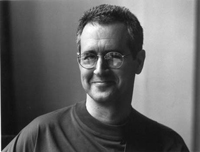“Impermanence is the Nike swoosh of reality … omnipresent, ubiquitous, glaring at us all the time” -Ethan
In the last regular class of this thrilling beginner Hardcore Dharma series (introductory info about Hardcore Dharma here), we talked about the Three Marks of Existence. They are:
1. Impermanence, or “Anitya” in sanskrit for all you uber-geeks
2. Non-Self, or “Anatman”
3. Suffering, though this is a muddied translation that Thich Nhat Hahn strongly dislikes, so we do too. ‘Dissatisfaction’ fits, as does “dis-ease” and the sanskrit is “Duhkha”
So the Three Marks of Existence are important and stuff, but what really got me thinking was when Ethan mused, “I wonder who was the first person to sit and do a contemplative practice, and why?”
No joke: This kind of blew my mind.
This is, no bullshit, a fascinating question. It’s like asking, “what would’ve happened if my parents had never met and I was never born?” The mind reels.
Who was the first person to sit and do some form of meditation (that we might recognize)? Why did they do it? How did they conceptualize their own mind, or the organ/property/sensation of consciousness that we call “the mind?” On one hand, this is an imponderable, since our notions of Self and Mind and Consciousness are products of the Renaissance, the Enlightenment, and the Internet.
It is, however, not beyond the reach of the imagination, and my first thought was not some yogi in India or an ancient Tibetan nomad or even some early gnostic in the Fertile Crescent, but much farther back to the Upper Paleolithic, between 14,000 and 18,000 years ago and the caves of Altamira, in Spain, and Lascaux, in France.
Most people seek out meditation and, indeed, any kind of faith or spiritual/philosophical system because they’re seeking relief from something painful or confusing or frightening. We might therefore assume that the first person to say, “I’m going to sit until my mind is calm and I can see in to the causality of things” (or somesuch), was coping with the loss of a loved one or an unstable and difficult environment, or maybe they were simply gazing up into the night sky and the enormity and strangeness of it moved them to try and Figure Things Out.
However it happened, the connection between meditation and the cave paintings at Altamira and Lascaux lies in the uniquely human need to situate oneself in a complex and dynamic reality. The only difference between me and a Paleolithic 24 year-old, besides the fact that 24 in the Upper Paleolithic was probably a ripe old age, is that I have a plethora of philosophical and religious systems to choose from. Whomever painted those fantastic bison, horse, and wild boar, using charcoal and ochre and the shape of the cave walls to create a sensation of movement as you walk through each chamber, was much closer to the raw materials of wonder, confusion, and the natural world that gave rise to religion in the first place. They were painting (extremely correct, as it turns out), representations of seasonal migrations, birth and death, and human-animal hybrids, perhaps gods.
They were, in their way, exploring the Big Questions, and while cave paintings are cave paintings (i.e., not meditation), I felt a strong connection between them and the searching quality of my own spiritual discipline. My interest in cave paintings is not artistic, though they are beautiful and haunting – it comes from a general education class I took at NYUU as an undergrad called, excitingly, “Archeology.”
Dr. Randall White was my professor and his passion for cave paintings, and all artistic or decorative products of the Paleolithic, was infectious. Each class, he would dim the lights in the lecture hall and show images of carvings, beads, and cave paintings, much of it from his own research, his voice becoming quick and resonant as he got excited about an object. The effect was not unlike a seance, or what I imagine a seance to be like. It was Dr. White who suggested that cave paintings were not amateurish efforts at representational art, but an effort to express a spiritual understanding of the world, sacred works instead of doodles.
So, who was the first person to meditate? I have no idea, but the urge to understand and gain a toehold of control in the overwhelming complexity of life is not new or particularly Buddhist. Meditation works for me. For my Paleolithic counterpart, it was charcoal on cave walls.
Conclusion: The Three Marks of Existence are important (yawn) and I wish I could bison draw with charcoal.

